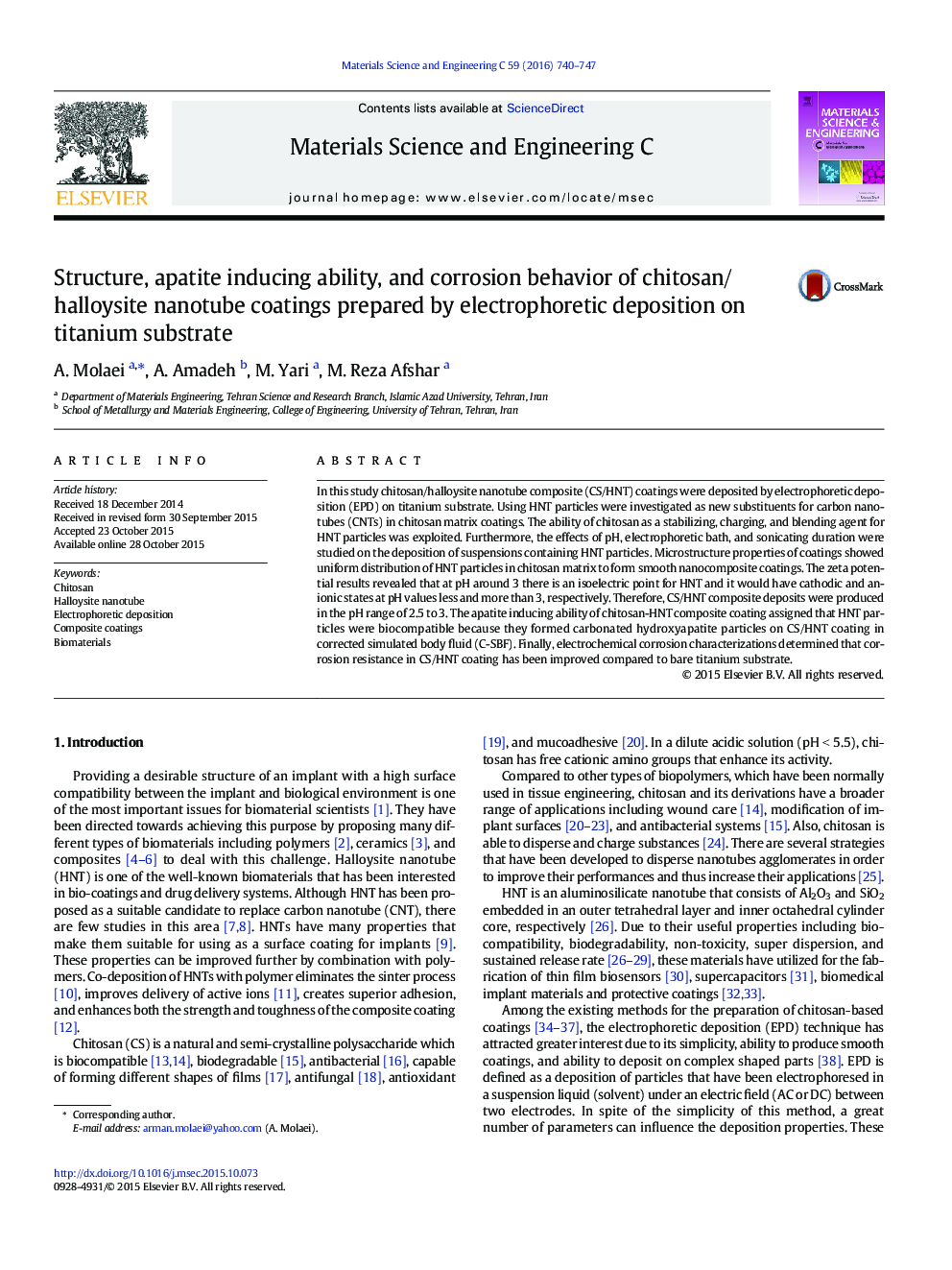| Article ID | Journal | Published Year | Pages | File Type |
|---|---|---|---|---|
| 7869088 | Materials Science and Engineering: C | 2016 | 8 Pages |
Abstract
In this study chitosan/halloysite nanotube composite (CS/HNT) coatings were deposited by electrophoretic deposition (EPD) on titanium substrate. Using HNT particles were investigated as new substituents for carbon nanotubes (CNTs) in chitosan matrix coatings. The ability of chitosan as a stabilizing, charging, and blending agent for HNT particles was exploited. Furthermore, the effects of pH, electrophoretic bath, and sonicating duration were studied on the deposition of suspensions containing HNT particles. Microstructure properties of coatings showed uniform distribution of HNT particles in chitosan matrix to form smooth nanocomposite coatings. The zeta potential results revealed that at pH around 3 there is an isoelectric point for HNT and it would have cathodic and anionic states at pH values less and more than 3, respectively. Therefore, CS/HNT composite deposits were produced in the pH range of 2.5 to 3. The apatite inducing ability of chitosan-HNT composite coating assigned that HNT particles were biocompatible because they formed carbonated hydroxyapatite particles on CS/HNT coating in corrected simulated body fluid (C-SBF). Finally, electrochemical corrosion characterizations determined that corrosion resistance in CS/HNT coating has been improved compared to bare titanium substrate.
Related Topics
Physical Sciences and Engineering
Materials Science
Biomaterials
Authors
A. Molaei, A. Amadeh, M. Yari, M. Reza Afshar,
